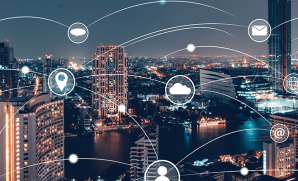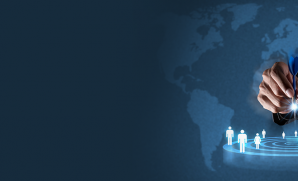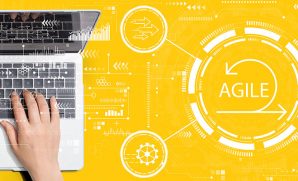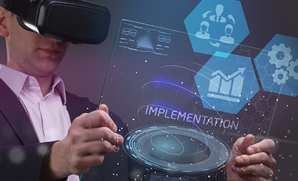Building a new generation of workforce to thrive in the new normal
Publish Date: August 14, 2020Human Capital or workforce has irrefutably been the most valuable asset to a successful business. Yet, when an economic downturn is lurking around the corner, the first and most common casualty is this asset, ‘its people,’ on whom the fortune of a company supposedly resides. Companies most often pivot all their cost-cutting efforts towards the workforce through downsizing, salary cuts, reduced employee hours, freezing promotions or other incentives, instantly dismissing all the wisdom of ‘investing in human capital’ garnered through ages.
In our last blog, we discussed how to go beyond survival and thrive during a crisis by applying 3D philosophy (discern-decide-declare). The caveat, though, is, it will never materialize without taking the chief architects, your workforce into account. In this blog, we attempt to answer the question: How do we prepare our workforce to create a competitive advantage in crisis rather than damaging their morale?
The COVID-19 crisis has fundamentally changed our conventional work life. Measures such as remote working, virtual teams, or physical distancing that seemed temporary are increasingly becoming the new norm. While we still do not have a clear blueprint of the ‘new normal,’ it is but certain that the old ways of working have ceased to exist. This makes it imperative for organizations to rethink and redefine their workplace strategies.
For an optimist as myself, I see this as an opportunity to re-engage with the workforce and reinvigorate the team spirit, which will, in turn, translate the crisis into a people advantage. However, to do that, we need to be cognizant of the likely challenges that a transformation of this scale and pace might bring along. Laying out a well-thought-out strategy will address the challenges to survive and help organizations take the leap to thrive in the new normal.
Challenges:
- The gap between the old and new ways of working: As with any transformation, there is bound to be resistance in embracing the new reality. While some employees may prefer remote working or maintaining a physical distance on-premise or operating on a hybrid model (working intermittently from both onsite and offsite), it could be unsettling for others to relinquish the traditional work settings. This might impact the organizational ties, the corporate culture, and, ultimately the productivity of the company. Yahoo! is a case in point here. Merissa Mayer retracted from their remote working experiment in 2013, recognizing that physical distancing was impeding the company growth and called for rebuilding the ‘One YAHOO!’ brand. Bridging this gap requires exceptional acumen in change management.
- Inadequate infrastructure support: Digitalization and automation have been the buzz words for long. But with the pandemic, it happened in sudden bursts, taking us leaps ahead into the future. While companies responded quickly to support the interim business need with a quick-fix solution, it was mostly a short-term remedy than a long-term strategy. Now is the time to re-evaluate their existing infrastructure and think of a long-term strategy.
- Lack of appropriate skills and knowledge resource: Providing infrastructure support to enable a remote or hybrid work set-up is just addressing one part of the puzzle. Many employees and even their managers across orthodox industries and few geographies are not skilled enough to function digitally. This requires companies to shell out substantial investments in training and upskilling existing employees.
- Eroding confidence in the organization: Economic downturn calls for tough trade-offs like job cuts, salary cuts, etc., creating a sense of insecurity amongst employees. The eroding trust and confidence could, in turn, impact profoundly on performance affecting bottom-line margins. Companies need to be sensitive to rebuilding the trust factor within employees.
- Psychological fallout: Besides the anxiety of physical well-being, the pandemic poses a series of threats to an individual’s emotional and mental well-being. New workplace norms like physical distancing and virtual working, compounds to those anxieties making employees more vulnerable to psychological fallouts. The conundrum to balance between work and household responsibilities, caring for children or elderly family members, might take its toll on the productive office hours. Leaders should recognize the diversity to worker’s expectations and support them through this crisis and transition.
All these factors, accumulated together, might heavily impact the workforce’s productivity and speed, thereby creating a dent in company performance.
Leaders should take a fresh look at organizations’ mission and purpose and use the perspective in reimagining the way a hybrid team can effectively work, collaborate, and innovate. This might require re-setting workforce priorities, introducing new approaches, and refining outcomes of adopting new norms and improving productivity. The three key areas which require reinvention include:
- Foster renewed team spirit by
- rebuilding trust through a shared purpose and creating a sense of belonging
Having a shared purpose and sense of belonging are the edifice of a strong team. The physical distancing, uncertainty of job or pay, the loss of a comrade, or even uncertainty over the company’s future could altogether languish the team spirit. Leadership and management play a huge role in restoring the eroding confidence through 1. clear communication of where the company is headed, 2. if there is a new direction undertaken, 3. a common goal and clear targets for individual teams. Creating a unified culture in a virtual set-up also requires frequent informal interactions, recurrent team-building efforts that foster a renewed team spirit.
As for YASH, among the many initiatives to rebuild the team spirit, virtual meditation classes are a huge success with active participation from employees across geographies. The virtual onboarding program for new joiners has been another initiative that is largely appreciated for its creative experience and integration between the old and the new employees.
- Recognizing employees need for individuality and integrating it with the common goals of the company:
Times of transition are received differently by different individuals. While some might struggle to embrace the virtual style of working, others might find it difficult to cope with the psychological fallout. Leaders should demonstrate patience to understand the uniqueness of an individual’s requirements and support them through their coping mechanisms. By reconnecting with them and recommitting to their needs during this tough time, leaders will be creating a strong army for the future. Now is the time to set aside our egos and emerge as “WE” instead of “I” in our pursuits to meet both personal, community, and corporate goals. The famous verse from the Bible rightly fits here, “Two are better than one… If either of them falls, one can help the other up.” Together we can achieve more and win big and thrive instead of just survive.
- Empowering your workforce to face the new normal head-on
a. Infrastructure support:
To sustain and recover in the long-term, companies need to re-evaluate their existing infrastructure capacity and revamp it to support the virtual environment. This requires the acceleration of their digitalization effort and equipping employees with digital tools. Organizations need to question how digital technologies, AI, and automation can be incorporated to simulate a virtual environment? Additionally, companies should also reassess their security systems to prevent cybercrime intervention that is rampant in a virtual set-up.
To ensure seamless support and continuation of services for its customers, YASH adopted a three-pronged approach:
- while enhancing YASH’s information security and acceptable usage and disciplinary policy documents, we also ensured training and strict adherence by each employee to preserve information security and confidentiality.
- we invested heavily in a business resilient digital ecosystem to enable our workforce to work securely from both within YASH’s trusted domain networks and remote connectivity. This strategy enabled us to easily adapt to disruptions while maintaining continuous business operations and safeguarding people, assets, and overall brand equity.
- we, as a company, duly comply with ISO 27001 & SSAE 18, ensuring high standards of deliverables from our development centers. Besides, we are constantly working towards enhancing security measures for greater customer satisfaction and data protection by deploying next-gen real-time tools and technologies.
b. Training:
Not too long ago were many scared of digitalization and automation stealing their jobs. Now is high time to ally with those technologies for routine activities and focus on more creative aspects of the job. The first step towards it is to bring onboard both the top and bottom level employees, helping them recognize the true value digitalization can offer. One most effective tactics to motivate and drive digital training is to integrate upskilling as part of employees’ annual goal settings. There should also be adequate provisions of developing talent through digital mentorship programs, whether inhouse or outsourced.
Learning and development have been an integral part of YASH’s culture. With this crisis, we have revamped our learning strategy to realign with the evolving business mission and market needs. We ensured 100% digitalization of all our learning offerings and have seen a remarkable increase in the number of courses voluntarily taken by our associates to upskill themselves. We have taken specific learning initiatives to ensure that this transition of working from office to home is seamless and helps teams connect and collaborate better, virtually.
c. Hiring digital experts:
Getting the existing employees upskilled, though ideal, could also be a time-consuming endeavor. Companies could balance it out by hiring digital experts. The fresh blood will not only expedite performance in the virtual environment but also reenergize the spirit of learning within existing employees and accelerate the journey towards the desired digital destination.
YASH’s talent acquisition strategy focuses on the key principle of ‘adaptability’ to meet the digital era’s needs. We focus on measurable recruitment marketing techniques to reach and attract talent and retain them by providing a conducive environment.
- Redefining performance metrics
A virtual or hybrid work set-up changes the dynamics of performance measurement completely. The former hourly log-in or input-based model is deemed irrelevant when one cannot estimate the real hours of work. It is the outcome, speed, and productivity that matters most. Micro-managing leaders should adapt themselves to giving more autonomy and accountability to team members to deliver results against the agreed performance target. Hierarchical decision-making also acts detrimental to a digital environment. Team members should be empowered to act fast and be supported by a productive environment that dissuades bureaucracy. A change in performance metrics drives increased productivity, speed, and innovation required to thrive in a hybrid environment.
Building a resilient workforce is key to organizational success. To achieve it, organizations should first recommit in ensuring the well-being of individual employees. A dynamic environment fostering trust, accountability, greater speed, adaptability, heightened team spirit, and a clear focus are the key ingredients to thrive in the new normal.
Recognized as a “Great Place To Work” by The Economic Times (ET GPTW Survey) for six consecutive years, YASH Technologies has constantly demonstrated the courage and conviction to make required fundamental changes in strategy and business model for creating the long-lasting people advantage. Through this blog, my goal is to impart some of our best practices to help companies ride through this crisis and turn it in their favor.
My last blog focus is to delve deep into the human aspect and make the best out of this crisis at all levels – personal, professional, and social.













